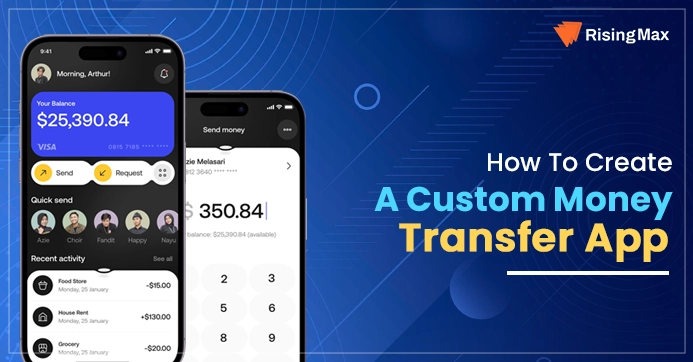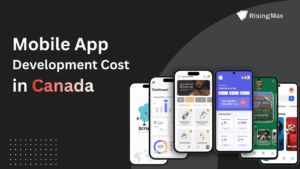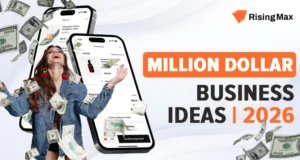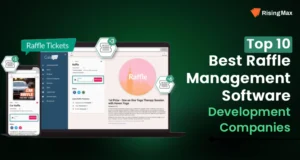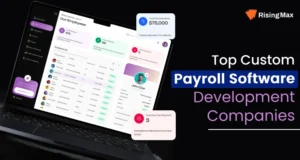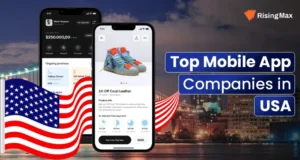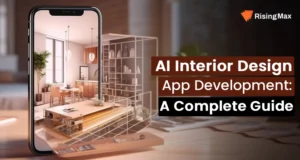Custom money transfer applications have caused significant changes in the financial services industry. Since then, all you’ve needed to complete any time-consuming financial transaction via a mobile app is an internet connection. Because most of us prefer simple solutions, today’s online money transfer systems offer maximum speed and convenience to customers. Customers can thus request information, receive it, and perform basic operations.

The following challenge is self-evident. A stable, efficient, and legally compliant platform is required to achieve the primary goals of any payment system.
But what if you don’t know how to create a money transfer app properly? As you read this article, you will gain many useful insights.
We invite you to read this short guide to make the most of your money transfer app.
We invite you to read this short guide to make the most of your money transfer app. If you are willing to get into the business of the money transfer application, we are providing free IT consultation service.
Money Transfer Apps You Can Build
You should be familiar with the various types of money transfer apps before delving into the fundamentals of creating one.
Peer-to-Peer (P2P)
Person-to-person payment systems refer to transactions made online or between two applications. This means that the app can only be used by one person to transfer money from a bank account or credit card. Mobile operating systems and independent and online banking services are the most popular P2P payment systems.
OS Systems
You should be familiar with popular peer-to-peer (P2P) services such as Apple Pay and Android Pay. Because they are an integrated device feature, they cannot be defined as a single app. In any case, the ability to make contactless payments for purchases wherever NFC technology is supported or PoS terminals are equipped with NFC technology is driving the growing popularity. Android and Apple users can only send money to other users of the same operating system.
Independent Services
You should be familiar with popular peer-to-peer (P2P) services such as Apple Pay and Android Pay. Because they are an integrated device feature, they cannot be defined as a single app. In any case, the ability to make contactless payments for purchases wherever NFC technology is supported or PoS terminals are equipped with NFC technology is driving the growing popularity. Android and Apple users can only send money to other users of the same operating system.
Online Banking Services
Integrating with systems like an electrical estimating and invoicing app can boost a money transfer app’s appeal to niche markets, enhancing functionalities for electricians and streamlining operations. Builders and electricians benefit from tools that merge payment processing with industry-specific needs. In the face of increasing competition among digital payment solutions on the market today, the banking industry had to keep up with global trends. As a result, many banks are beginning to provide their customers with peer-to-peer (P2P) online services. Merchants must typically have specific hardware in order to accept payments.
Money Transfer App Critical Features
When it comes to analyzing functionality while developing a money transfer app, you must first define all of the system’s necessary components. The most important features are primarily motivated by the need to comply not only with user experience requirements but also with data privacy laws and payment regulations.
As a result, we advise you to pay close attention to the following list of essential features of a money transfer platform:
E-wallet
A digital wallet, also known as an E-wallet, is a place where users can store their funds and bank card information. One feature of this online service, regardless of the user’s location, is the ability to make contactless payments without the need to open a new bank account each time.
Payment Information
The ease with which users can manage their finances distinguishes the payment statistics system. It shows all user transactions sorted by volume, status, country, and receiver. As a result, users have a more consistent experience and can interact more easily with their financial data.
Payment of Bills
A custom money transfer app’s other distinguishing feature is the ability to make payments online at any time and from any location. You can make your application more appealing to customers and competitive with other market participants by incorporating invoice scanning.
Notifications
Allow your users to receive notifications about various money transactions, such as new funds, regular money transfers, or important monthly payments. This means that the user receives real-time notifications whenever any activity occurs in the application.
Cross-Border Transfer
By allowing them to simplify the money transfer process, you automatically invest in their loyalty. Users can send and receive international money transfers in seconds, avoiding the usual delays and high fees.
Currency Exchange
Currency exchange features will increase the value of your potential users. Users will be able to receive dollars, euros, or other currencies with a few swipes at any time, rather than having to physically visit currency exchange offices.
As you can see, the aforementioned list of essential features is essential for your money transfer platform. Our experienced team can handle it even if you have your own preferences and reasons for adding more features. Keep in mind that the highest level of data protection, overall privacy, and compliance with all legal requirements must be implemented on the backend.
Get the complete details of the features and the revenue generation model directly. We are just one click away. Get free consultation services from our experts.
Align the current state of IT with your business strategy by hiring the most trustworthy Mobile App Development Company
Steps To Create A Money Transfer App
After we’ve discussed the various types of money transfer systems and their key features, we’ll go over the key steps to starting a software development team. The discovery phase is the first step in the development of any software company. This stage includes both market research and project estimation. Following the establishment of the project’s baseline, the team moves on to the tasks. The steps that follow are divided as follows:
Creating a user-friendly UX concept
Designers begin work on a multilingual user interface that is compatible with a variety of devices such as smartphones, tablets, and desktop computers at this stage. Your application’s dashboard should be simple and user-friendly, and it should meet all user requirements for smooth and clear access to the system’s functions, even in areas with low connectivity.
Money Transfer Portal Development
Your team will work on the development of a “money transfer portal” while integrating all of the core features. This means that the aforementioned functions are currently being implemented. As a result, developers of money transfer software will create e-wallets that allow users to send and receive funds through multiple channels in multiple countries, make contactless bill payments, international money transfers, currency exchange, and so on. During this process, developers must also include the ability to set limits on sending and withdrawing funds, the number of transactions per day, and other features so that their future customers can control their funds and financial transactions.
User Management Modules
Following that, it is strongly recommended that user management modules be integrated to manage customer accounts. Your future app system should include interfaces for cashiers, administrators, and auditors, as well as for creating balance histories and tracking account activity. Other options include running marketing campaigns, creating promotional codes, and communicating with customers through emails and messages.
Real-time Reporting and Accounting
By utilizing real-time reporting and accounting features, your user will be able to monitor multiple transactions and use analytics to create reports, and balance sheets and estimate profits and losses. Customers are typically helped by the availability of reporting and accounting in setting limits and controlling their assets.
Security
In most cases, security issues pose a problem. As previously stated, compliance with all specific legal and local regulations, as well as requirements for financing terrorism, money laundering, and so on, is critical. Another component is to provide users with the highest level of system security possible, making malicious activities avoidable. Establishing identity verification, such as Anti-Money Laundering (AML) and Know Your Customer (KYC) protection, data encryption, recovery, backups, embedding session time limits, and the like, is part of this step. As you may have guessed, creating a money transfer app is not an easy task.
Cost Of Building A Custom Money Transfer App In 2023
The app development cost depends on various factors including; the type of application you want to build, what type of advanced features you want to build, the size of the company you are hiring for the application development, etc.
Let’s see what could be the probable cost to develop a money transfer app.
|
Designing Cost |
$6K-$10K |
|
Cost For Outsource Software |
$5K To 8K |
|
Cost Of Deployment |
$12K |
|
Cost For Maintenance |
$1500 To $4000 |
|
Cost For Hiring Project Manager |
$25/ Hour |
|
Quality Assurance Team And Testers |
$5000 |
The cost mentioned above purely depends on what are your requirements and expectations with the money transfer app.
What RisingMax Inc. Offer You?
Team with Experience
We have a strong mobile app development team with years of experience providing our clients with advanced mobile app solutions.
Meaningful Results
We first learn about the client’s business before developing customized mobile app solutions that solve current problems and provide meaningful outcomes.
Pricing Transparency
RisingMax Inc. adheres to a transparent pricing policy and development process in order to provide affordable business-oriented mobile app solutions.
Flexible Hiring
As a top-rated mobile app development company in NYC, we provide flexible hiring models to meet the needs of our global clientele.

Conclusion
Build the high-end money transfer app to gain maximum users and revenue for the application. Get in touch with us for a free consultation on the android/iOS/Cross-platform money transfer app.

